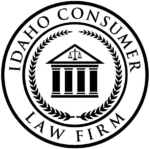TL,DR version: When you are in business, you want to avoid infringing on another’s trademark and you should protect your interests in your own trademark. Going through the process of registering a trademark helps resolve these concerns.
A trademark is a “mark” that identifies the source of goods in trade–hence a “trademark.” A trademark is often the name of a business or product, a logo, or brand element. For example, the Nike swoosh is a trademark Nike uses to identify Nike products.
1. Make Sure You Are Not Infringing on Another’s Trademark
If you infringe, you can be held liable to the trademark holder. This means that a court may order you to turn over profits, pay fines or penalties, pay the other party’s attorney’s fees and costs, and of course cease engaging in the infringing activities. Or all of the above. In other words, it’s possible that all of your hard work in getting the business up and running can be for nothing…or worse.
How to make sure you are not infringing.
To make sure you’re not infringing, you have to do your homework. It requires investigation. The main question you want to answer is: “Is the use of my intended trademark likely to cause confusion in the market?” To answer this question, there are three places you need to look.
1. The Federal Trademark Database. Researching the federal database will help you identify potentially conflicting marks that have been registered with the United States Patent and Trademark Office (USPTO). You can do this research through the Trademark Electronic Search System (TESS).
2. State Trademark Databases. Each state will allow people to register trademarks they intend to use within that state. There are a number of companies that can do this work for you. Otherwise, you would have to access each state’s office one by one. That is obviously a very burdensome endeavor.
3. Common Law. Some people start using original trademarks in commerce without registering them with a state or the federal government. This is called an unregistered trademark or a common law trademark. The law allows for these and these trademarks are enforceable. To investigate the existence of a potentially confusing unregistered trademark, you have to search through google, yellow pages, domain registries, newspapers, etc.
The point of investigating federal, state, and common law sources is to identify whether there are potentially confusing trademarks with your own. Making this determination is itself somewhat of an art form. There are, however, factors to consider. These factors are known as the “Polaroid Factors” because they come from a case called Polaroid Corp. v. Polarad Elecs. Corp., 287 F.2d 492 (2d Cir. 1961).
There is always going to be some amount of risk in any business. You may believe, even correctly, that your mark will not cause confusion and someone else may disagree. This can result in a dispute over the trademark. Ultimately, doing these searches minimizes your risks but will not eliminate them completely.
If you want help coordinating the searches or if you questions about it, let me know. Schedule a time to talk or just shoot me a text: 702-291-1799.
2. Prevent Others From Infringing
If you want to prevent others from using your trademark, you will definitely want to register the mark with the federal government. Registering the trademark there gives you the broadest protections and enforcement mechanisms available in the US.
For example, common law trademarks grant the exclusive right to use the mark only in the geographic locations it is actually used or may expand. Federally registered trademarks grant exclusive rights in the entire U.S.
Common law remedies are also not as robust as federal ones. For instance, federal law allows statutory fees, shifting of attorney’s fees, and even triple damages. The burden of proof will also be easier. In contrast, common law remedies are generally limited to actual damages.
Still, it is up to you to police your mark and failure to do so can actually end up canceling those rights.
If you have questions about trademark searches or registration, let me know!
[button text=”FREE Consultation” url=”http://meetme.so/smbconsult” background_color=”#3a8f1e” text_color=”#ffffff” style=”lt_flat” size=”large” icon=”” open_new_window=”true” rounded=”true”]

